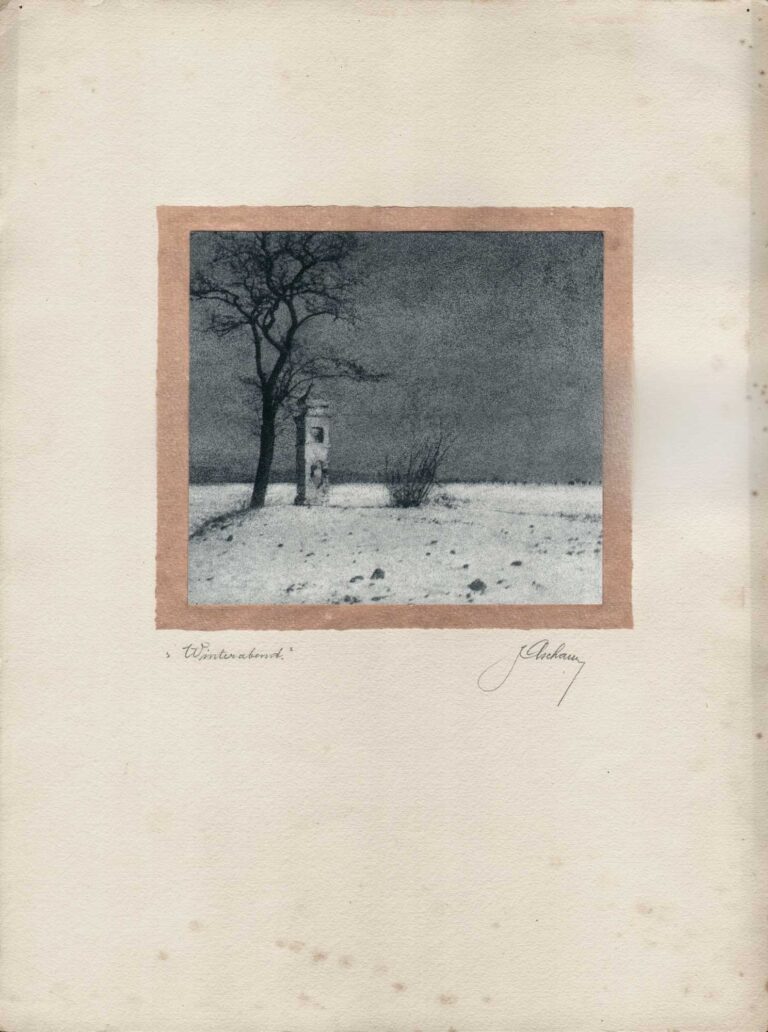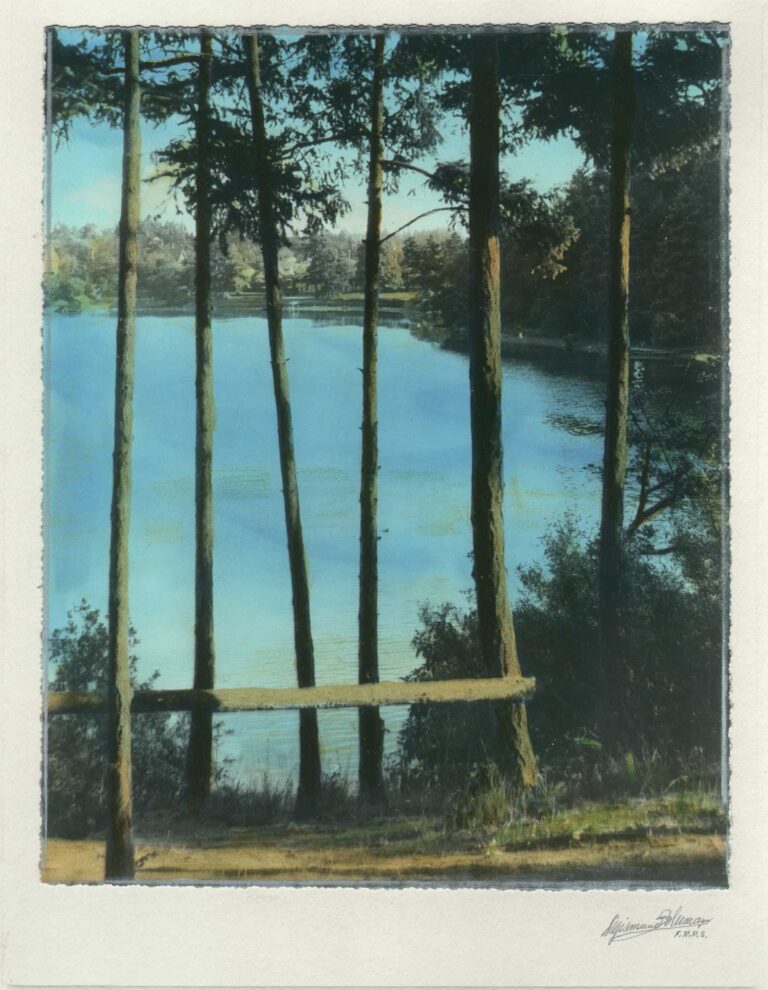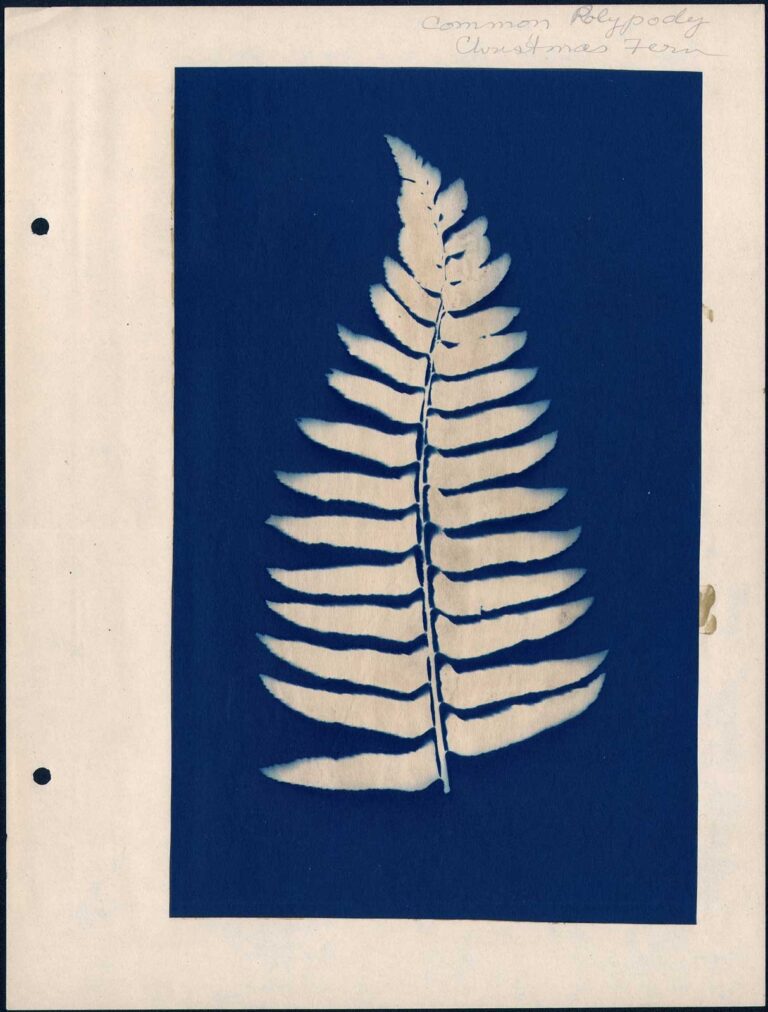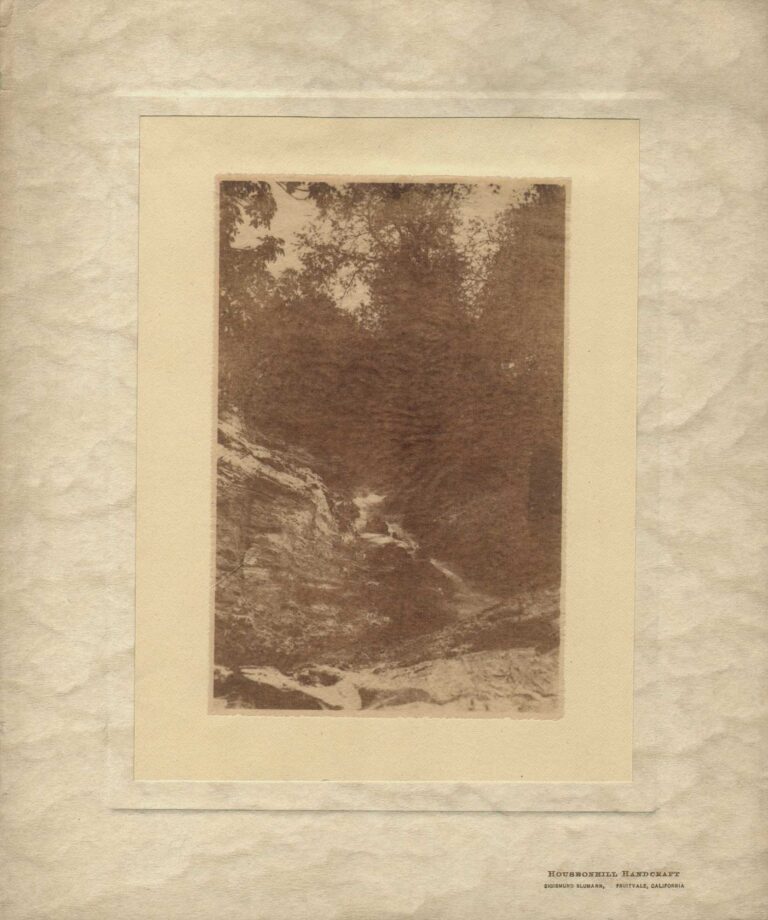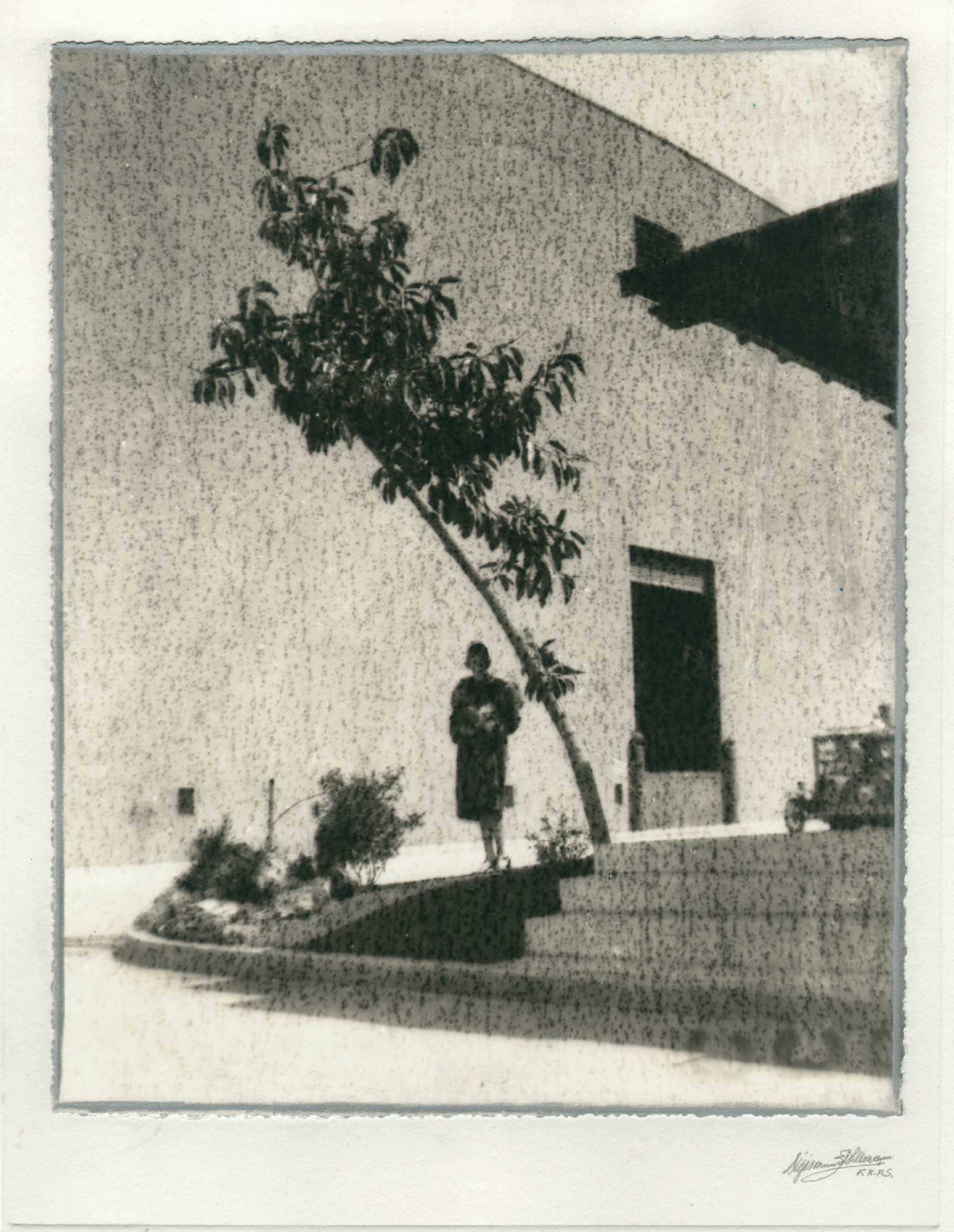
Bonnie Beneath the Bough
This striking modernist composition most likely dates to the late 1920s or early 1930s. Its been noted Sigismund Blumann was an active experimenter in the darkroom but he was also very open to “teaching himself a few new tricks”- photographically speaking- even after actively taking photos for nearly 30 years.
This change may have come about after befriending the professional Los Angeles photographer Philip Newberg at a convention. The artist struck upon the idea of doing a simple series of photos showing the photographer at work- producing not only a series of images that documented the act of photographing, but creating images that, in the words of photographic historian Christian Peterson: “boldly experimented with the abstract massing of light and dark.” (1.)
It certainly would not have been a stretch for him to project these newly learned principals of “massing” light and dark in creating this outdoor composition. The role of a model is central to the overall composition, with all the elements of sun and shade coming into play. In this, the tree at center acts almost like an exclamation mark- Bonnie is literally beneath her bough: highlighted by the many shapes that converge around her- from the wall behind acting as a massive reflector to the varied deep shadows found in the doorway behind, the awning above and shadow-bisected stairway set before her.
Peterson continued with his analysis of these new modernist aesthetics Blumann was using for the aforementioned studio compositions: “More important than the activity shown, however, was the near abstract manner in which Blumann depicted it. Blumann used strong contrasts in most of the pictures to render the photographer, the model, and the lights essentially as silhouettes. He rigidly structured the images with dark borders that framed the figures and created a stage-like setting. And, as was his common practice, he printed a stippled texture into most of the series, adding a flat, poster-like quality to the photographs.” (2.)
For this exhibition lithobrome print, the addition of a darkroom overlay stipple effect gives the monochrome and high-key rendering the added impression of rain coming down on a bright sunny day.
1. “Sigismund Blumann, California Editor and Photographer,” by Christian A. Peterson, in History of Photography, vol. 26, no. 1. (Spring 2002). p. 67
2. Ibid, p. 67
